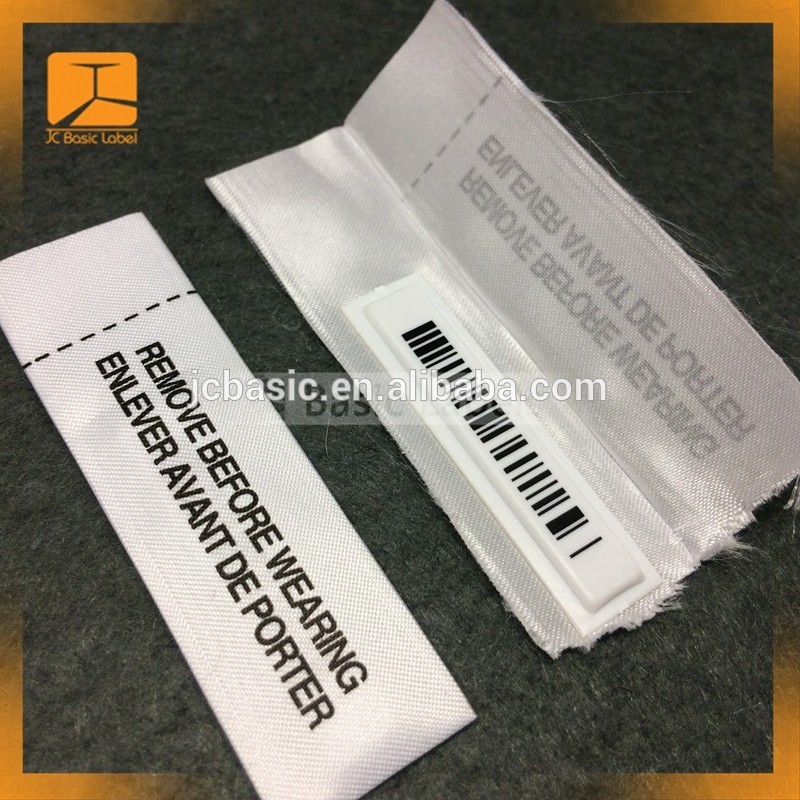The Privacy Coach and RFID
In the paper The Privacy Coach: Supporting customer privacy in the Internet of
Things, Broenink, Hoepman, Van ‘t Hof et al.[PC2010] propose a mobile phone application and architecture
that helps consumers decide on their privacy regarding RFID cards or tags.
Depending on how these RFID techniques are used, static objects can become part
of an Internet of Things. We take a look at the current state of the art in RFID
land.
Already in 2002, people thought of plans to use radio identification to “reveal shoplifters”. At that time, only a few systems existed, each with their merits and disadvantages:
Currently, three different systems exists that prevent retail theft. It would be nice to have one standard system: an invisible strip with a chip; its location unknown even for the retail employees. It would be very nice when the manufacturer already installed that strip.
(translated from 1). One of the disadvantages mentioned with one of these systems is that the detection gates could only be placed 80 centimeters apart, which collided with safety precautions.

Nowadays, RF and RFID tags are commonly used to help retail shops track their inventory, detect thefts and can be used to count customers (see also Nedap’s intelligent article surveillance technique). Clothes are typical items where these tags are used. Some are quite obvious (grey large plastic tags punched into clothes), some are hidden inside the “REMOVE BEFORE WEARING” tag as can be seen in the picture, while others are complete RFID tags hidden behind a barcode.
Simple acoustic-magnetic and RF tags can only be used to “arm” a product before it is sold. After it has been sold, the tag is “defused” (this YouTube video explains what the tags are made of) and cannot be used to track products any more2.
The more advanced RFID tags, as seen in Nedap’s iSense Lumen, can be used for multiple purposes. The main difference with RF tags is that RFID tags are not physically destroyed after an item has been sold.
Nedap’s technology in their iSense Lumen product line makes it possible to track inventory from the moment it enters some loading dock, is placed in the store, sold, and leaves the store. This is interesting for supply chain management at the retailer’s side, but the tags used are typically not destroyed after a consumer bought an item and left the store. If the tag is still on the bought item and a consumer re-enters the store, this can be detected by the inventory management system. In a way, these items are part of an Intranet of Things.
What if this inventory management system can link a couple of RFID cards in your wallet with a product you recently bought (such as a rucksack)? What if that same system is also coupled to some big screen at the entrance of a shop? In that scenario, it may be likely you “spontaneously” get to see some interesting (obviously relevant) products on that big screen based on your previous purchases and the fact that you enter the store with a previously-bought item.
I was at a Decathlon a couple of weeks ago and bought a rucksack there. At the cash register, it occurred to me that a lot of these desks were self-service ones. After payment, you would have to put the bought items in some sort of container before you could take them with you. At the time, I thought the typical RF tags (see above) in the items would be deactivated. Just now, I read this news article about Nedap’s systems at Decathlon3 and realised it is actually registering the tags of the products you bought.
These purchases can be linked with a customer loyalty card (which I do not have), making it possible for the inventory management system to know the exact products a customer has bought. When I re-enter the store with the same rucksack, combined with their loyalty card, I can be easily identified. To some extent, the scenario I sketched two paragraphs ago may become reality in the near future.
We have now seen the current possibilities of RFID tags. In a next blog post, we will look at a combination of the proposed Privacy Coach application and practical ways to detect various RFID tags.
-
From the Dutch newspaper Trouw, 2002-01-15, “Houd de dief!”, Kees de Vré (online) ↩
-
Most of these kind of tags can be “armed” again by a retailer, of course. Typically, the tag is placed on an item and stays on that item after it has been sold. ↩
-
The article mentions Croatia as the fifteenth country worldwide where Nedap’s technology is used, “following twelve other European countries, Russia and China”. I assumed that the Dutch branch of Decathlon already uses this technology. ↩